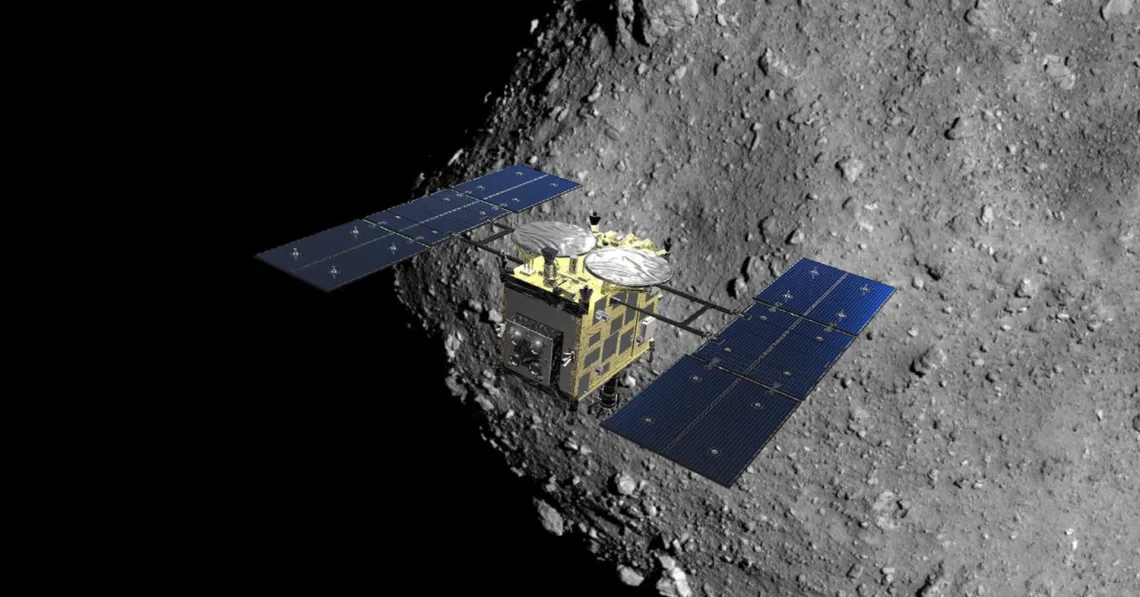Samples of Asteroid Ryugu Show Signs of Ancient Water

An artist's impression of Hayabusa 2 at asteroid Ryugu. Credit: JAXA/ISAS
While most planetary geology is done from afar, it’s amazing what we can do when samples are brought back to Earth. In a recent study of pieces returned from the asteroid 162173 Ryugu, scientists report in Science Advances that the rubble-pile asteroid hailed from a parent body with a wet past.
Japan's Hayabusa 2 spacecraft returned the sample of more than 5 grams (about the mass of a U.S. nickel) to Earth on December 5, 2020. With the sample, researchers can study a pristine example of the primordial solar system that, unlike meteorites, is not contaminated and altered by a hot trip through Earth's atmosphere.
Previous studies have found that Ryugu is likely a carbonaceous chondrite, a type of asteroid that is rich in carbon, volatiles (including water), and organics.
However, while most elements are similarly distributed across Ryugu and its carbonaceous siblings, scientists have previously found the distribution of chromium doesn't follow the same pattern. This one element varies in concentration more widely over Ryugu's surface than in other studied examples of the same type of asteroid.
